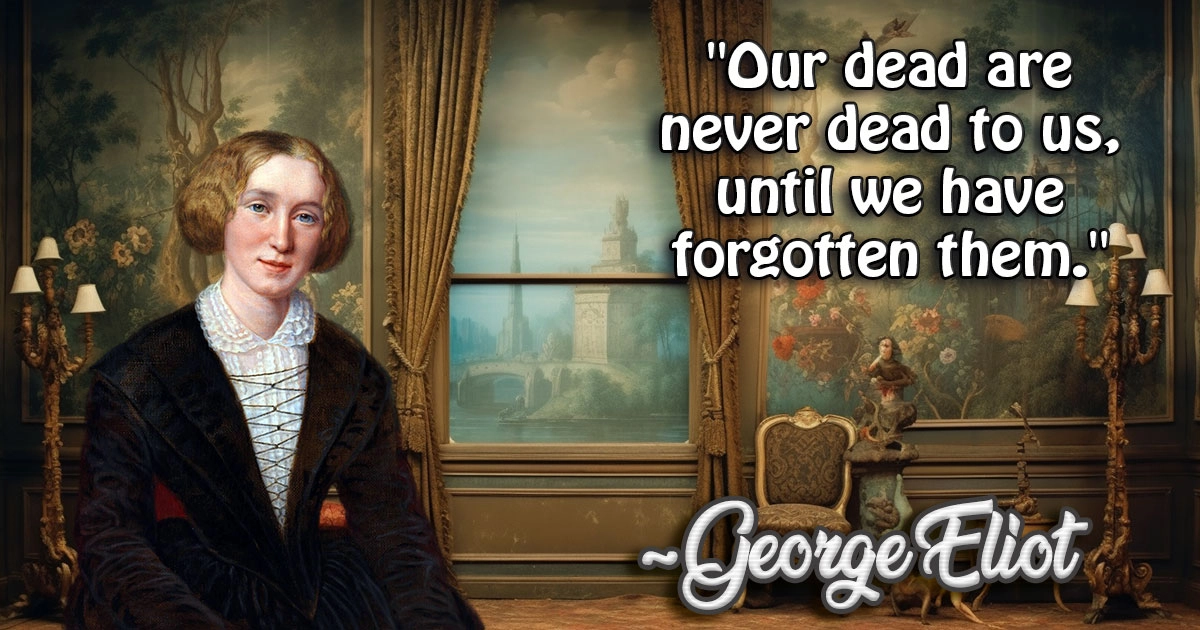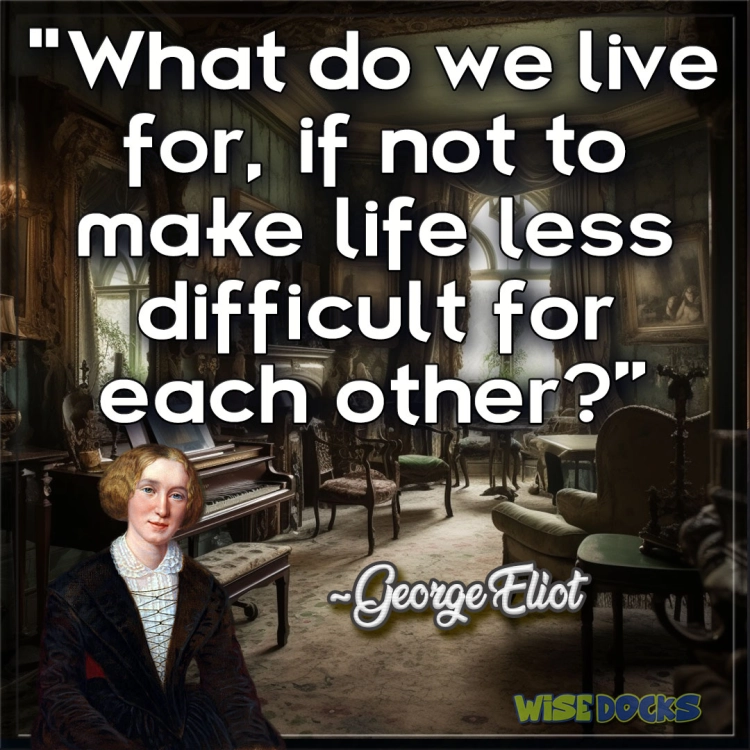George Eliot: The Pen Name, The Woman, The Genius

George Eliot
George Eliot, born Mary Ann Evans on November 22, 1819, in Nuneaton, Warwickshire, England, was a woman ahead of her time. She would grow to become one of the most significant and influential writers of the 19th century, leaving an indelible mark on literature with her deep psychological insights, complex characters, and moral realism. Her journey from a young girl in a provincial English town to a literary giant is a story of intellect, courage, and defiance of societal norms.
Early Life: The Making of Mary Ann Evans

Mary Ann Evans was the third child of Robert Evans, a land agent, and Christiana Pearson. Her family was respectable but not wealthy, and her father’s position allowed her access to a level of education and culture that was uncommon for women of her time. Mary Ann was a precocious child, deeply curious and intellectually driven. She quickly developed a love for books and learning, a passion that would shape the course of her life.
Her early education was thorough by the standards of the day, but it was her independent reading that had the most profound impact on her development. Mary Ann was particularly drawn to the works of Enlightenment thinkers and writers, whose ideas about reason, ethics, and the human condition would resonate throughout her literary career. This intellectual curiosity was encouraged by her father, who recognized her potential and supported her education, even as he harbored traditional expectations for his daughter.
However, Mary Ann’s intellectual growth also led to inner conflict, particularly in matters of religion. Raised in a devout Anglican household, she began to question the doctrines of the church as she delved deeper into philosophy and science. This questioning culminated in a break with her faith during her teenage years, a decision that caused a significant rift between her and her father. Despite this, she continued to live with him, managing the household after her mother’s death and later acting as his secretary.
The Move to Coventry: Intellectual Awakening
In 1841, after her father retired, Mary Ann and her father moved to Coventry, a move that proved pivotal in her intellectual and emotional life. Coventry was a hub of intellectual activity, and it was here that Mary Ann met Charles and Cara Bray, progressive thinkers who introduced her to a circle of free-thinkers, writers, and social reformers. The Brays were instrumental in Mary Ann’s development as a thinker and writer, encouraging her to explore ideas outside the constraints of conventional society.
It was during this time that Mary Ann began translating German theological works, including David Strauss’s The Life of Jesus and Ludwig Feuerbach’s The Essence of Christianity, into English. These translations not only honed her skills as a writer but also solidified her reputation as an intellectual force. Her work with the Brays and other intellectuals in Coventry exposed her to a wide range of ideas, from positivism to socialism, all of which would later influence her fiction.
Mary Ann’s time in Coventry was marked by a deepening sense of her own identity and purpose. She was no longer content with the conventional role of a woman in Victorian society, and she began to seek ways to express her ideas and beliefs more publicly. However, the road ahead was not without its challenges. As a woman in the 19th century, Mary Ann faced significant obstacles in gaining recognition for her intellectual and literary achievements.

London: The Birth of George Eliot
In 1850, after her father’s death, Mary Ann moved to London, determined to make a name for herself as a writer. She initially found work as an editor for The Westminster Review, a leading radical journal, where she worked alongside some of the most prominent intellectuals of the time. Her work at the Review further expanded her intellectual horizons and provided her with a platform to express her ideas.
It was in London that Mary Ann met George Henry Lewes, a writer, philosopher, and critic who would become her lifelong partner. Lewes was already married, but his marriage was an open one, and he and Mary Ann quickly formed a deep emotional and intellectual bond. Their relationship scandalized Victorian society, which frowned upon such unconventional arrangements, but Mary Ann was undeterred. She and Lewes lived together openly, defying social conventions and facing ostracism from many quarters.
It was Lewes who encouraged Mary Ann to try her hand at fiction, believing that her deep understanding of human nature and moral complexity would make her an excellent novelist. Taking his advice, Mary Ann began writing fiction under the pen name George Eliot, a decision born out of the desire to avoid the prejudices faced by women writers of the time and to protect her privacy.
Her first published work, Scenes of Clerical Life (1857), was a collection of short stories that provided a glimpse into the lives of rural clergymen. The stories were well received, praised for their realism and psychological depth. Critics and readers alike were intrigued by the new writer, but few knew the true identity of George Eliot. Mary Ann’s ability to capture the intricacies of human behavior and the moral dilemmas faced by ordinary people set her apart from her contemporaries.
The Major Novels: Masterpieces of Realism
Following the success of Scenes of Clerical Life, George Eliot published her first novel, Adam Bede (1859), which was an immediate success. The novel’s portrayal of rural life, its complex characters, and its exploration of moral and social issues resonated with readers and established Eliot as a major literary figure. Adam Bede is often regarded as one of the finest examples of Victorian realism, and its success encouraged Eliot to continue writing novels that delved into the human psyche and the moral complexities of life.
Over the next decade, George Eliot produced a series of masterpieces that would cement her reputation as one of the greatest novelists of her time. The Mill on the Floss (1860), Silas Marner (1861), and Romola (1863) each explored different aspects of human experience, from the pressures of societal expectations to the redemptive power of love and community.
Perhaps her most ambitious work was Middlemarch (1871-1872), a novel often hailed as one of the greatest in the English language. Middlemarch is a sprawling, intricate portrait of provincial life in the early 19th century, and it addresses a wide range of themes, including politics, religion, marriage, idealism, and self-interest. The novel’s depth of character and its exploration of the inner lives of its characters marked a new level of psychological realism in literature.
Middlemarch is notable not only for its literary achievements but also for its profound moral vision. Eliot’s characters are complex and flawed, struggling with their own desires, ambitions, and moral dilemmas. The novel does not offer easy answers but instead presents life in all its messiness and ambiguity. Eliot’s ability to portray this complexity with empathy and insight is what makes her work enduring and relevant even today.
Another of Eliot's significant works is Daniel Deronda (1876), her final novel, which explores themes of identity, Jewish culture, and Zionism, topics that were quite radical for her time. The novel’s dual narrative follows the lives of the eponymous Daniel Deronda, a young man searching for his identity and purpose, and Gwendolen Harleth, a beautiful but flawed woman whose life is turned upside down by her choices. The novel reflects Eliot’s broad intellectual interests and her engagement with contemporary issues, particularly those related to race, religion, and nationalism.
Personal Life and Legacy
While George Eliot’s professional life was one of triumph and success, her personal life was marked by both joy and sorrow. Her relationship with George Henry Lewes was one of deep affection and intellectual partnership, but it was also a source of pain due to the societal judgment they faced. Despite this, their relationship endured for over two decades, until Lewes’s death in 1878.
Lewes’s death was a devastating blow to Eliot, and she withdrew from public life for a time, finding solace in her work. However, she eventually found happiness again with John Cross, a man twenty years her junior, whom she married in 1880. Their marriage was short-lived, as Eliot died only a few months later on December 22, 1880, at the age of 61.
George Eliot’s death marked the end of an era in English literature. She was buried in Highgate Cemetery in London, alongside George Henry Lewes, in a grave that has since become a pilgrimage site for lovers of literature.
Eliot’s legacy as a writer is immense. She broke new ground in the portrayal of human psychology, bringing a level of depth and realism to her characters that was unprecedented in English literature. Her works continue to be studied and admired for their exploration of moral and ethical dilemmas, their nuanced portrayal of human relationships, and their engagement with the social and political issues of the day.
George Eliot’s influence extends beyond her novels. As a woman who defied societal norms, both in her personal life and in her professional career, she paved the way for future generations of female writers and thinkers. Her decision to write under a male pseudonym was a pragmatic one, but it also highlights the gender inequalities of her time, which she sought to challenge through her work.
Eliot’s commitment to exploring the complexities of human experience, her moral seriousness, and her belief in the possibility of human improvement through empathy and understanding have made her one of the most enduring figures in literature. Her novels are not just stories; they are profound explorations of what it means to be human, and they continue to resonate with readers more than a century after her death.


